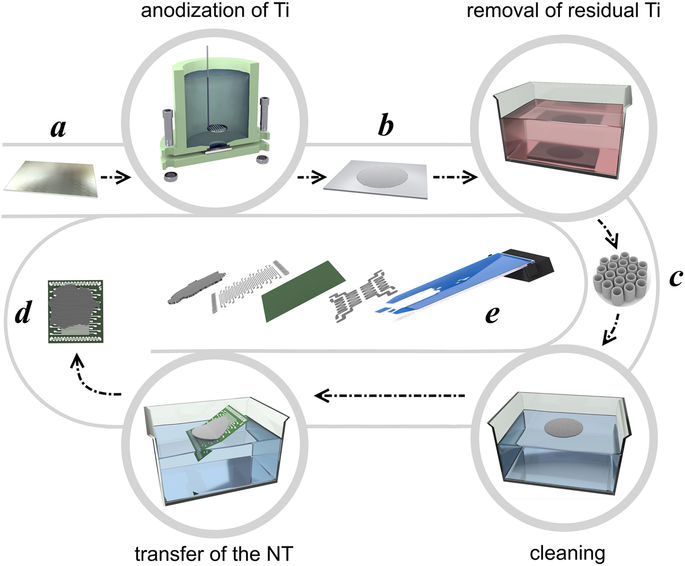Relying on nanotechnology, scientists from Russia and Germany led by Skoltech research scientist Fedor Fedorov have developed an innovative solution for detecting traces of gas in the air.
Given our growing global population and the current level of industrial output, humanity is in urgent need of accurate and affordable gas sensors that can reliably monitor the state of the atmosphere. The ideal gas sensor would be highly sensitive and selective, enabling it to detect even the lightest traces of certain types of substances in the air. It would also be inexpensive to produce and energy-efficient.
At present, most gas sensors are made of various materials: transition metal oxides, carbon materials (graphene, carbon nanotubes) and various polymers. Despite the obvious progress in increasing the sensitivity of such sensors, inadequate selectivity remains a key problem. Furthermore, there is always a need for new technologies that are compatible with modern electronics.
Scientists from several universities in Russia (Skoltech, the Yuri Gagarin State Technical University of Saratov and the Russian Academy of Sciences’ Institute of Radioengineering and Electronics) and Germany (Karlsruhe Institute of Technology) teamed up to address these challenges.
As a result of their research, they have developed a nanotechnological solution for creating a highly sensitive and selective sensor. These new sensors will consist of arrays of nanotubes made of titanium dioxide.
Array titanium dioxide nanotubes (electron tomography).
They chose titanium dioxide because it exhibits good chemoresistive properties; its resistance level varies with the appearance of gas vapors in the atmosphere.
The device is able to identify which type of substance it’s detecting by dividing a given material into segments to be a set of sensors and processing the obtained vector signal using pattern recognition techniques. This enables it to create a fingerprint of sorts for each type of gas it detects.
In addition to its environmental impact, this device could prove effective in helping doctors diagnose ailments in their patients. When people have certain diseases, like diabetes and various cancers, their breath contain abnormally high amounts of certain organic gases, particularly acetone. The gas sensor would be able to detect these abnormalities in patients.
The developed technology is inexpensive and scalable to be easily implemented in modern electronics. It utilized soft chemistry methods to fabricate the nanotubular array which is then transferred onto the chip to serve as sensitive layer.

Fig 1: The scheme of fabrication the multisensor chip based on TiOx NT array: (a–e) denote respectively Ti foil (a), Ti foil with as-prepared NT array (b), the extracted NT array (c), the NT array placed over the chip (d), the scheme of multisensor chip wired into 50-pin ceramic card (e) Image credit: Scientific Reports.
“During our laboratory studies, we were able to test the response of our system to acetone, isopropanol and ethanol. The latter two gases are very similar to each other. And not only were we able to detect these gases; we were able to distinguish them from one another. To do this, we trained our system to identify the appearance of a gas by its ‘fingerprint’,” said Fedorov.
Electronic tomography of several nanotubes of titanium dioxide
The results of the study have been published in the prestigious research journal Scientific Reports.
Video credit: Scientific Reports.
Contact information:
Skoltech Communications
+7 (495) 280 14 81
